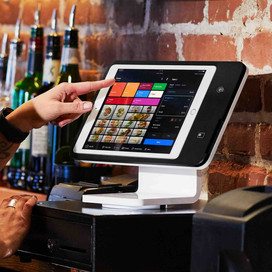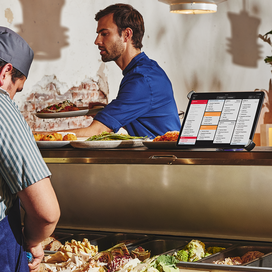Table of contents
Costs are rising for restaurants — nearly 100% report high labor and food costs as major issues, and 38% were not profitable last year, according to a report from the National Restaurant Association. With restaurant prices predicted to rise by 4.2% this year, it’s clear that at least some of these costs are being passed on to customers.
To improve your restaurant’s profit margins, you need to increase revenue or decrease costs. But how can you achieve profitability without just raising your menu prices? Big food and beverage brands achieve this by streamlining back-of-house operations to reduce waste, updating menus to focus on high-margin items, or building a unique social media presence to help foster customer loyalty.
Your restaurant might not be able to pivot as quickly or make big-scale changes like large chains, but you can still make an impact, even with something as simple as reviewing portion sizes with your kitchen staff to make sure they aren’t overusing ingredients. With the help of restaurant technology, you can also learn more about real-time restaurant health and customer behavior to make informed decisions about operations without sacrificing the quality of your service or products or the satisfaction of your customers.
1. Set your workers up for success to be quick and efficient.
When your front- and back-of-house staff are working in harmony, you can turn tables and keep new customers coming in quicker. You can start by providing your staff with tools to help them work more efficiently, and implement workflows that don’t require as much specialized training.
With a kitchen display system like Square KDS, which instantly routes orders directly from your POS, your team can track, fulfill, and complete every order that comes in, whether online or in person. Not only can this speed up order processing time, but you also slash unnecessary printer and paper costs as part of the process.
2. Carefully review how you order food and supplies.
Relying on a single supplier for your food or other goods is a great way to establish strong business relationships, but it leaves you vulnerable to supply interruptions and price fluctuations. Using multiple distributors provides better coverage to avoid delivery disruptions, while also giving you more bargaining power to get the most competitive prices and keep your purchase costs low.
Plus, closely managing your ingredient inventory helps reduce food waste, which costs the restaurant industry about $25 billion annually. Rely on your restaurant technology to track how much food you buy, use, and throw away to make more accurate orders, reduce spoilage, and improve the overall cost of goods sold.
3. Build your menu strategically.
As a first step to an optimized menu, you can use the same core ingredients across multiple dishes. Bulk ordering chicken breasts that can be used in sandwiches, salads, and pasta dishes, for example, can reduce your food purchasing costs while also keeping things simple for your kitchen staff. Another way to craft your dishes to maximize revenue is to evaluate how much it costs to put together each item.
A “barbell” menu strategy pairs affordable items with higher-priced or premium products — for example, offering customers a low-cost burger along with a premium, more expensive milkshake. Understand how much each ingredient costs to know where you can easily profit from low-cost items as well as where you can bring in more money on higher-priced items.
4. Identify your most profitable channels and drive business there.
Square research shows that 90% of restaurant owners plan to start new revenue streams this year by expanding their products and services they offer, like selling branded merchandise. Nearly 60% of customers have purchased a retail item from a local restaurant in the past year.
Understanding the profitability of each of your revenue streams is crucial. Start by identifying which customers spend the most money, and on what products. Does your patio perform better than your indoor bar on weekends? With Square for Restaurants POS, your team can easily access this kind of information in the Square Dashboard, which tracks real-time sales data. Maybe it makes sense to increase prices on third-party delivery apps if you want to bring customers to your more profitable in-store kiosks. Use these insights to tailor loyalty programs that reward returning customers and steer them toward your most profitable channels.
5. Know how your customers feel about your brand and offer them a consistent, excellent guest experience.
It matters what people think about your brand. Standing out in a competitive landscape is crucial to attracting customers, and offering great experiences keeps them coming back. And if you have multiple locations or franchises, maintaining consistent quality in food, service, and atmosphere helps build that credibility.
Word-of-mouth referrals and positive online reviews help generate new customers, meaning new income. Plus, research shows customers are willing to pay more for brands they trust. Measure how your customers perceive your brand by accessing your online reviews via your marketing channels. If you do ultimately need to raise prices to maintain your profit margins, loyal customers are less likely to leave if they trust your brand.
Get a head start with the right data.
Restaurants need the right data at their fingertips to decide where to reduce expenses or invest more time and resources into boosting revenue. Having an accurate picture and detailed, custom reporting of business metrics like sales performance and ingredient costs helps provide the crucial information needed to understand sales trends, identify losses, and spot opportunities to increase income or cut costs. With the right insights, it can be easier to achieve healthy restaurant profit margins, even in the face of inflation and rising operational costs.
![]()












